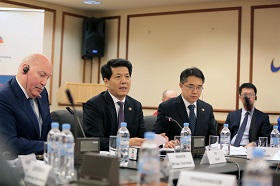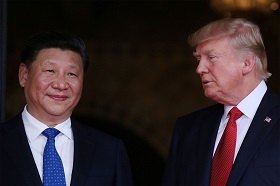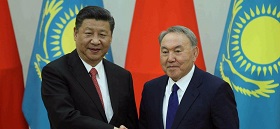Trade volume between China and Russia is increasing, the leaders of both countries have committed to a closer relationship, and new areas of development and economic cooperation are becoming more valuable for the two countries. While politicians and commentators alike speak about the importance of bilateral trade, the subject of investment is often left aside. So far, investment in real economy is lagging far behind the trade numbers. The tide is now shifting as the governments recognize the need for, and make concrete steps to encourage, mutual investment both by state and by private actors. With Western capital being virtually absent due to the sanctions regime, Russian economic and political focus is shifting East. As Asia and Middle East are becoming primary sources of foreign capital, Russian government is trying to attract more Chinese money to the real economy. While Chinese investment in the Russian economy has been growing fast, the number of Russia backed deals in China remains very low.
Trade volume between China and Russia is increasing, the leaders of both countries have committed to a closer relationship, and new areas of development and economic cooperation are becoming more valuable for the two countries. While politicians and commentators alike speak about the importance of bilateral trade, the subject of investment is often left aside. So far, investment in real economy is lagging far behind the trade numbers. The tide is now shifting as the governments recognize the need for, and make concrete steps to encourage, mutual investment both by state and by private actors. With Western capital being virtually absent due to the sanctions regime, Russian economic and political focus is shifting East. As Asia and Middle East are becoming primary sources of foreign capital, Russian government is trying to attract more Chinese money to the real economy. While Chinese investment in the Russian economy has been growing fast, the number of Russia backed deals in China remains very low.
Why is China Increasing its Investment in Russia?
Chinese investment in Russia is for the most part, a political decision. Russia’s foreign interest is to prioritize the East, and China is responding positively to the Russian government’s initiative. China has a strong interest in developing its relationship with Russia and secure the status of Russia’s political ally in order to satisfy its resource needs. These goals correspond to the sectors where China invests most: in energy producers and other commodity producers, which make up more than half of the investment volume.
Energy consumption per capita remains very high in China with crude oil and natural gas external dependence reaching record levels. Russia, the world’s major energy provider and China’s neighbor, is therefore an important strategic partner in energy projects and new energy initiatives. This is consistent with the fact that Russia is currently China’s top oil supplier with deliveries in excess of 1.5 million barrels per day. Considering Russia’s capability to exploit low-cost energy projects, its close proximity, and its weakened stance at the negotiating table due to Western sanctions, Russia remains a comfortable solution for China’s energy needs.
Rosneft and Gazprom are the two energy giants involved in majority of China’s deals. In 2017, CEFC and Beijing Enterprises acquired two Rosneft subsidiaries for a total of USD 10,8 billion [1]. Meanwhile, Gazprom signed a USD 400 billion contract to supply natural gas to China through The Power of Siberia pipeline starting in 2019. All these projects came as a result of agreements made at the very top: high profile deals negotiated by the government remain a distinguishing feature of most agreements between the two states.
Other high profile energy deals have likewise been started with a political agenda in mind. In 2016, China’s Silk Road Fund acquired 10% of Sibur, a Russian gas processing and petrochemicals company. Together with Chinese National Petroleum Corporation, Silk Road Fund owns 29,9% of Russian industry giant Yamal LNG. The issue with both is that most of the funds that are invested by the Chinese go back to projects in China, not making it to the Russian infrastructure [2].
China’s investment strategy abroad is based on several milestones: investing for energy shortage reasons, investing for political reasons, constructing projects in the Belt and Road Initiative overseas, and conducting projects connected with the China’s export of technology and equipment. All of them are aimed at reaching one of these goals: sustain or expand political partnerships; to get immediate/ short-term returns on investment; or to increase the presence of Chinese business abroad.
In August 2017, the State Council of the People’s Republic of China released a guideline on overseas investment outlining the sectors of interest. These restrictions included sectors that Chinese businesses had already heavily invested in in the West, real estate making the top of the list. A fair amount of such projects are located in Europe, forcing companies to terminate many of the deals, which will drive the Chinese out of Europe and encourage more interest in Russian projects that are of diplomatic interest for Chinese government.
Which Mechanisms are Used to Invest?
Drivers and investment mechanisms for mutual direct investment are often sovereign wealth funds (SWFs), particularly Russian Direct Investment Fund (RDIF), and Russia–China Investment Fund (a joint venture between RDIF and Chinese Investment Corporation (CIC), a major Chinese SWF), as well as Silk Road Fund (SRF), another Chinese SWF. RCIF’s pre-IPO investment in Detsky Mir, leading Russian toy retailer, became one of the most successful non-energy deals in 2016. Another recently announced high profile RCIF deal is acquisition of 16.1 percent stake in Russia’s Eurasia Drilling Company (EDC), an offshore & onshore oil drilling services company [3].
Chinese development banks have also entered Russia with Chinese ExIm Bank opening an office in Saint Petersburg in connection with providing debt to Baltic Pearl, a major mixed-use real estate development that attracted investment from Shanghai Overseas Joint-Investment Co.
As far as Chinese commercial banks, a handful of them set up subsidiaries in Russia (some as early as in 1990s) and there was hope, especially in post-sanctions world, that these banks would provide much needed financing to Russian business at competitive rates, given the banks’ relatively inexpensive yuan funding at home. For now, these banks focus primarily on yuan transactions and do not provide rouble funding to either Russian or Chinese businesses on a meaningful scale.
Finally, there are small (often in regions bordering China) and few medium size Chinese private businesses that are active in Russia. Some notable examples include Haier’s refrigerator factory in Naberezhnye Chelny and a Great Wall automobile factory in Tula. For now though, large Chinese energy companies, SWFs and development banks — all state controlled -- are the main catalysts of China’s investment activity in Russia.
What about Russian Investment in China?
One example of successful Russia-backed investment in China is RCIF (50% owned by RDIF) investment in Didi, Chinese taxi platform that since then acquired local Uber and its competitor Kuaidi.
One of the leading private investor in China is Vitaly Mashitskyi, whose company Vi Holding has been investing in Chinese mining, energy and high-tech aluminum sectors since 2006. Joint investment project Uyilyan is a one of a kind investment in China: the company is the pioneer of hot-rolled aluminum sheet production. Total investment in Uyilyan has already exceeded USD 3.4 billion, making it the largest private Russian investment in China. Overall, the topic of Russian investment in China is very tentative.
What is Slowing down the Positive Trend of Bilateral Investment?
Right now, there is no substantial mid-level investment coming from China to Russia. Chinese investment is divided into agreements made at the top level and smaller businesses testing the waters. Many projects are announced, but only a small percentage takes place. Most of the investment decision are, at least to a degree political are executed through state controlled actors.
The Russian market remains unknown for the Chinese, although there is more and more investment activity between the two states. The same applies to Russia — the ways of doing business and investment strategies are very different, and often it takes a lot of time to make something happen. But, tourism to Russia is gaining more attention in China, which might be a positive thing to get acquaintanted with the Russian market: people getting to know the country on a personal level will make business/investment relations easier to implement. Media/info projects such as Big Asia in Russia that are initiated by the government and private sector can impact the promotion of bilateral investment and educating decision makers and entrepreneurs on new opportunities in both China and Russia. Right now, there is lack of information, understanding, and experience, when it comes to bilateral investment.
In China, most of the state companies are directed to support local businesses or communities and, given domestic pressures due to slowdown, have been recently told not to invest too much outside of China. It is reasonable to expect that with more business getting familiar with the markets, there will be more interest in investment projects as well.
There are a lot of initiatives, new “funds” but still relatively few examples of direct cross boarder investments in both directions. But the trend is positive, led by SWFs, Chinese energy giants and development banks, all state sponsored actors expand the scope of their bilateral relationships.
The way how the trend of bilateral investment is going to develop remains unclear, but following the Chinese investment strategy, it is safe to predict that China will sustain its interest in Russian energy and gas. If the ecological situation in China continues to worsen, and demand for food products increases with its growing population, agriculture might very well become another sector of interest.
In Russia, the state lacks funds for overseas investment. Attracting investment in Russian infrastructure will most likely remain a priority. Most of the deals between the two states are still done in U.S. dollars. There is a start of a good tendency and initiative to sign yuan and rouble.
1. In September Chinese oil company CEFC agreed to buy a minority stake at Rosneft PJSC, 14,6% from a joint venture between the Glencore and the Qatar Investment Authority, for about $9 bln; following a deal signed in July for acquisition of 20% of another Rosneft’s daughter for $1,08 bln by Beijing enterprises. In October a CEFC spokesman said Rosneft had pledged to give the company access to 11 million to 13 million tons of oil annually (220,000-260,000 barrels per day), starting 2018.
2. China is also planning a joint venture refinery and petrochemical complex in Russia near the Chinese border with an estimated investment of $870 million. The goal of this pipeline would be to supply refined fuel to China
3. Previous attempts of the German company Schlumberger to buy a stake in EDC failed, some say, for political reasons.







